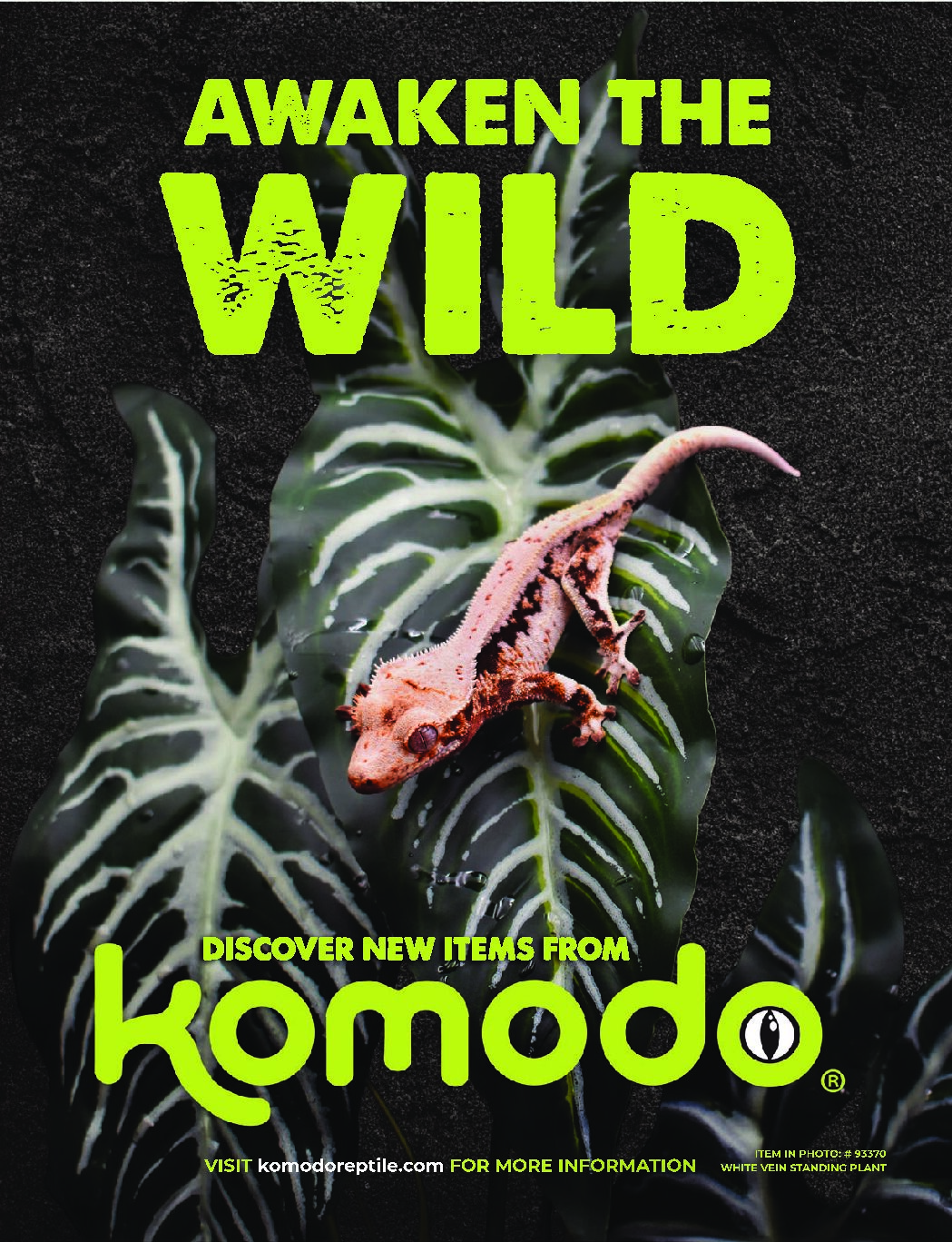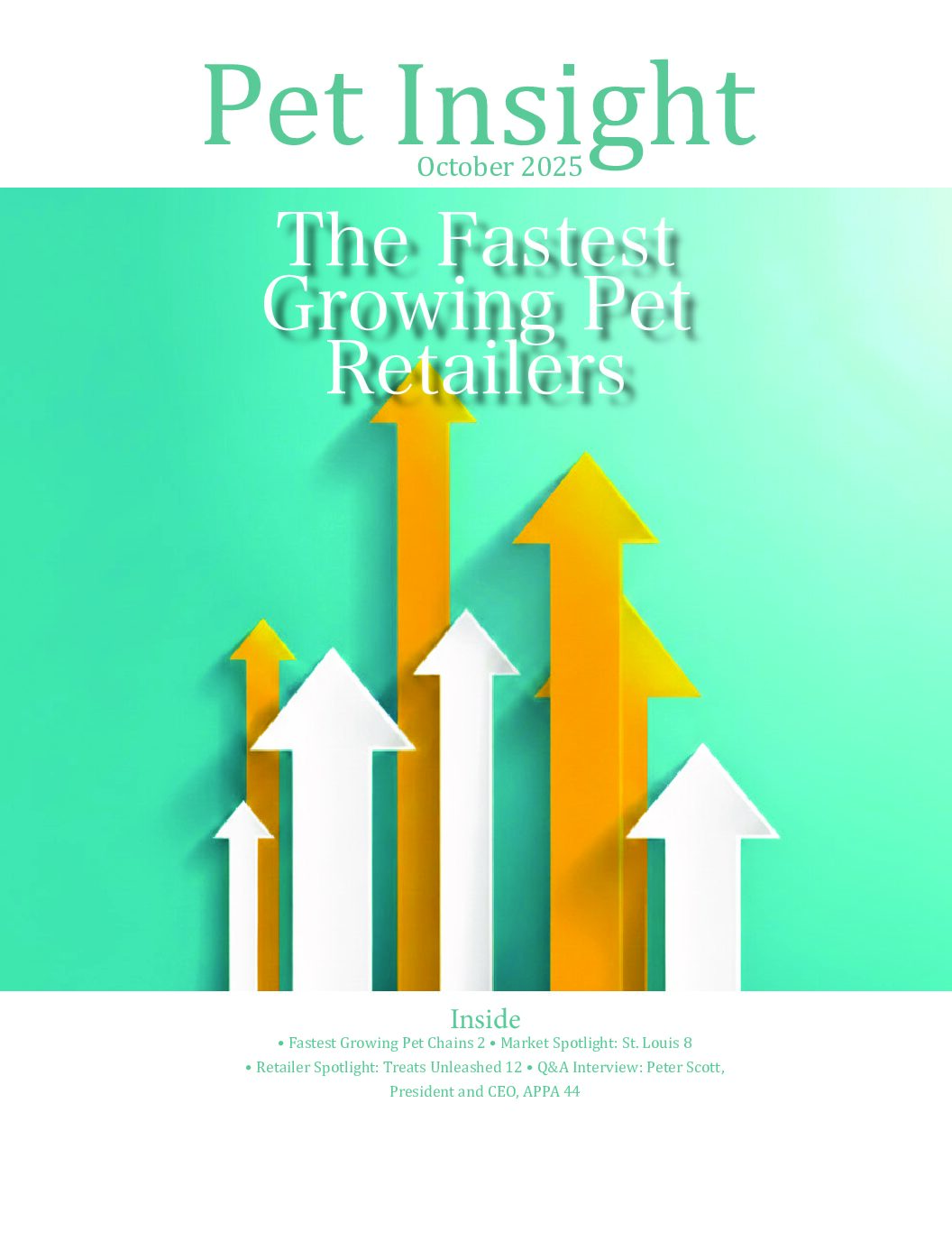Category Analysis: Reptile Merchandising
The reptile merchandising category has seen increased growth due to the popularity of pet owners’ interests in varying exotic animals. These leaders in the category have been offering high-quality and effective products to pet owners and their pets since their inception and have continued to elevate the category throughout the years.
“2025 has been a year of expansion and momentum for Komodo,” said Rich Koliner, VP of Sales and Marketing. “We’ve built on our strong foundation in reptile décor and habitats and continued to establish ourselves as a trusted partner for retailers looking to grow their reptile business. One of our biggest accomplishments this year was broadening Komodo’s presence across the market, making our products accessible to a wider audience of reptile keepers. We’ve also launched several new SKUs in heating, nutrition and enrichment that have performed well above expectations. Collectively, these wins underscore our commitment to elevating the reptile category and supporting its continued growth.”
“Overall, we have been satisfied with this year. A much-needed improvement from recent years. I think this is due to improvements in the economy. Hopefully, this will be a continuing trend,” said Brandon Armstrong, Owner of Armstrong’s Cricket Farm.
There are several characteristics and practices that these leaders attribute to their continued success in the category. “We listen to the customer—both retailers and reptile keepers—and respond with products that are practical, affordable and aligned with best practices in reptile care. Our global heritage gives us credibility, but our US focus ensures we’re tailoring products to this market. Operationally, we’re disciplined: consistent fill rates, reliable supply and price points that balance value with margin. Finally, Komodo stands for education and responsibility in reptile keeping. That message resonates with retailers and pet parents alike,” said Koliner.
“Service, quality and dependability are the major factors that set Armstrong’s Cricket Farm—Louisiana apart from all the others. Our ability to adapt to a customer’s specific needs, and knowing that if something is wrong, we are going to make it right,” said Armstrong in reference to the company’s practices.
As we continue into the latter part of the year, “Our focus heading into Q4 is twofold: Supporting our retail partners with strong in-stock positions for the holiday and first-quarter reset windows. [Secondly] building on the success of our new product launches by preparing for additional innovation in 2026. We are investing in category management resources to help retailers maximize reptile sales and continue to broaden the education message around proper reptile care,” said Koliner.
“We tend to have a slower season in the winter due to the seasonal nature of some of our business. This gives us more time to tend to our facilities and equipment. The pet industry does keep us busy during the holiday seasons due to shipping challenges, but we offer shipping options 52 weeks a year,” said Armstrong.
The category has become more mainstream in the industry thanks to consumers’ growing interest in exotic animals. “The reptile category has matured significantly in the past 12–18 months. It’s no longer just a niche corner of the store—it’s a recognized growth driver. Retailers are dedicating more space, upgrading planograms and leaning on vendor partners to help bring consistency and clarity to the set. We’re also seeing an influx of younger pet owners entering reptile keeping, which has changed the design and merchandising expectations,” said Koliner.
Putting prices aside, consumers are looking for value. “Pet parents across the board are more value-conscious, but in reptile, we see a consistent theme: they will not cut corners on the essentials. Heating, habitat and nutrition are viewed as ‘must-have’ categories, so households prioritize those even when budgets are tight. Where the trade-offs happen is in décor and add-ons—price-sensitive consumers may buy fewer accessories, while more affluent pet parents still trade up for higher design and brand consistency,” said Koliner.
Similarly, Armstrong said, “I feel like there is a shift happening that people are looking more for quality and less at price. I hear all the time how people are not happy with [specific big box stores], and we only go to our local store. Your local owned store is going to have better knowledge, and they are going to have better product when it comes to your animals needs. If you have certain needs and Armstrong’s Cricket Farm is serving them we can help to accommodate your needs.”
“Education and trust are two big drivers. Pet parents want to know they’re buying products that are safe, effective and backed by a brand with credibility in reptile care. Sustainability is increasingly important as consumers look for eco-conscious substrates and responsibly sourced décor. Design also plays a role—today’s pet parents want enclosures that are not just functional but attractive in the home,” said Koliner.
“Live food has continued to be a significant driver of foot traffic into retail and has remained a strong contributor to the revenue mix at retail,” said a Timberline Live Pet Foods spokesperson.
Inside
Q&A Interview: Peter Scott, President and CEO, APPA
Category Analysis: Premium Foods
Category Analysis: Retractable Leashes
Category Analysis: Supplements
Category Analysis: Reptile Merchandising
Category Analysis: Health and Wellness
Category Analysis: Freeze-Dried Premium Foods


